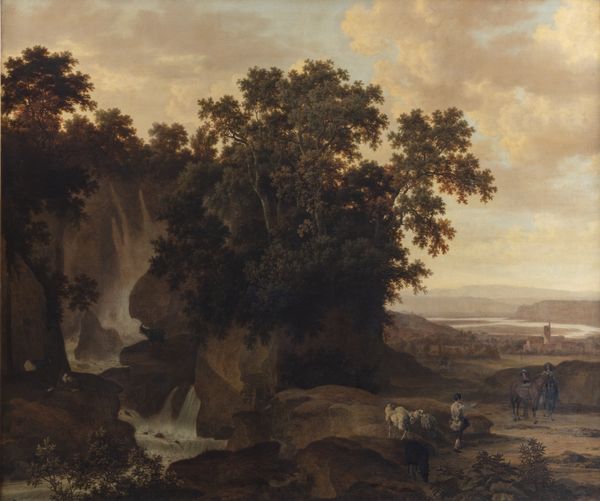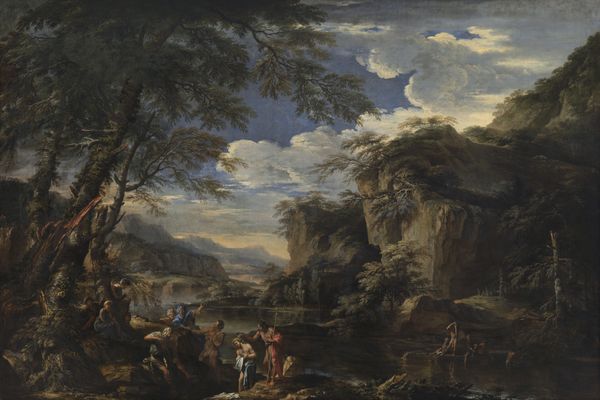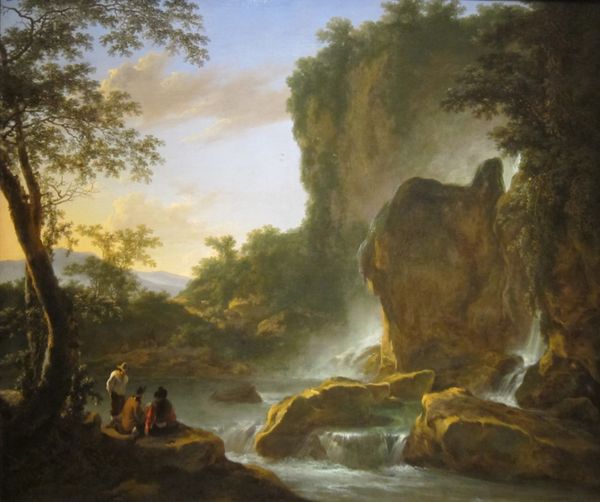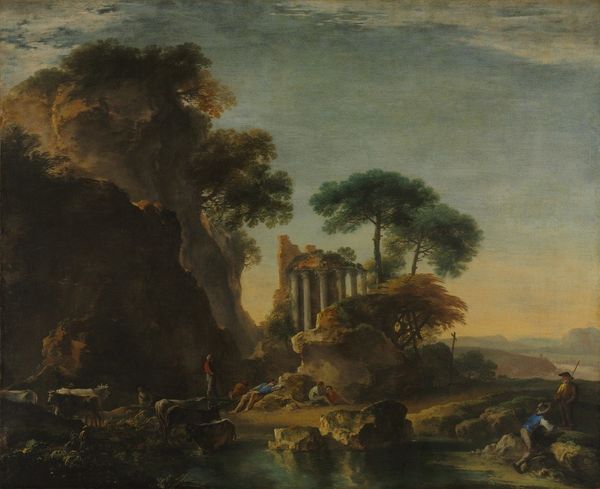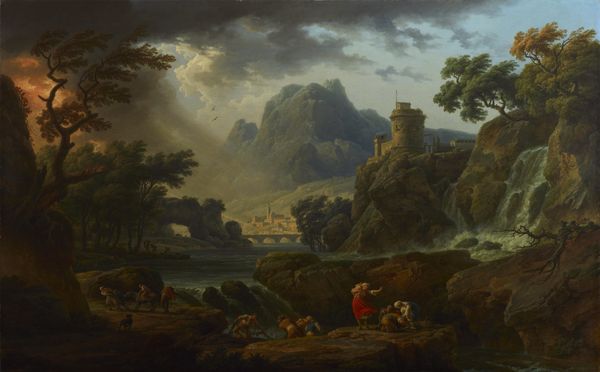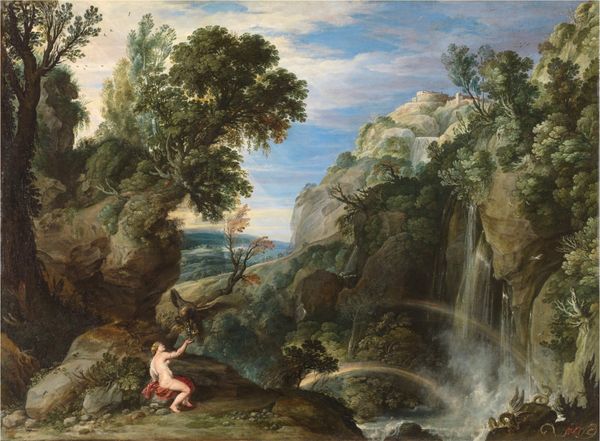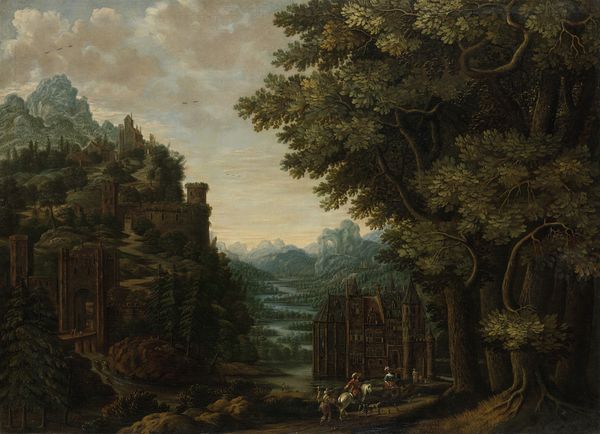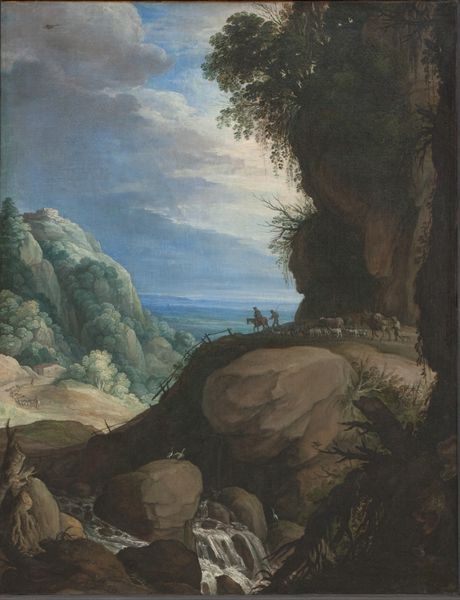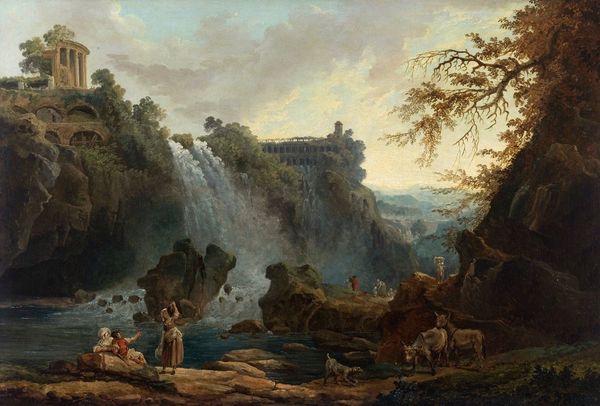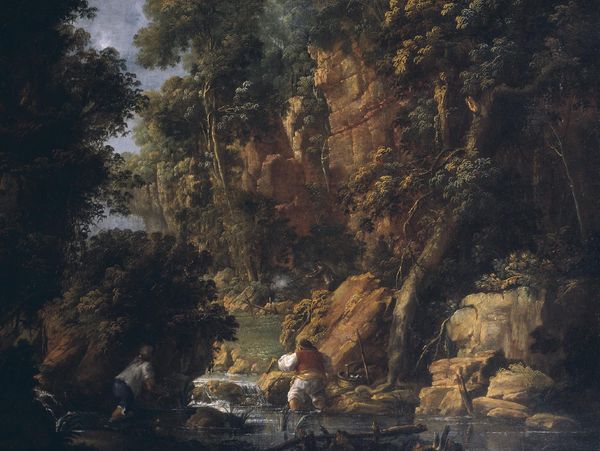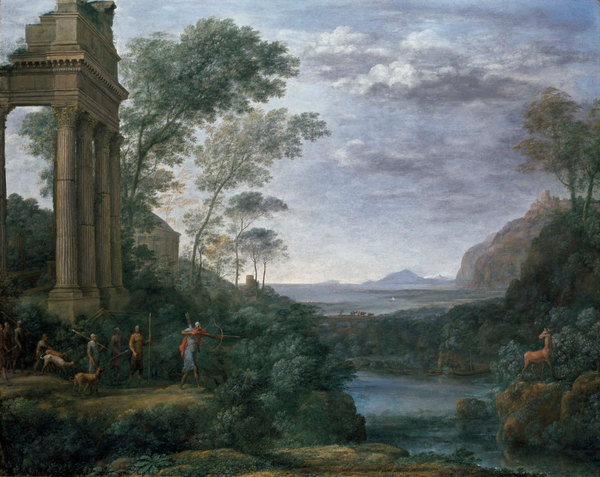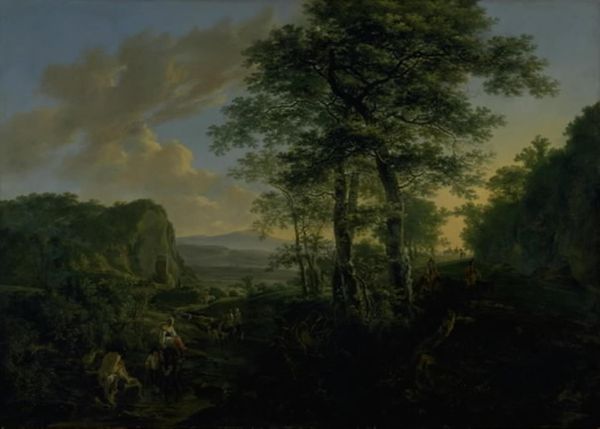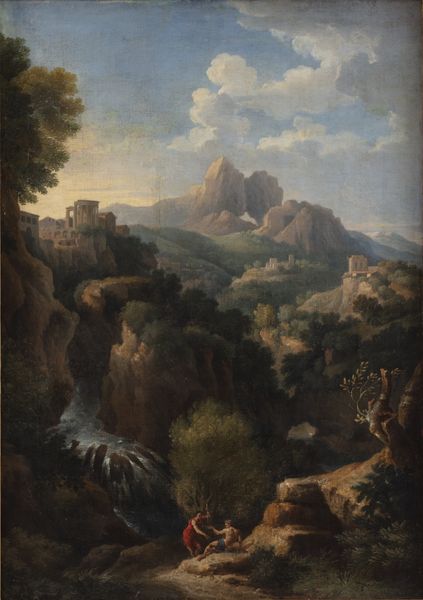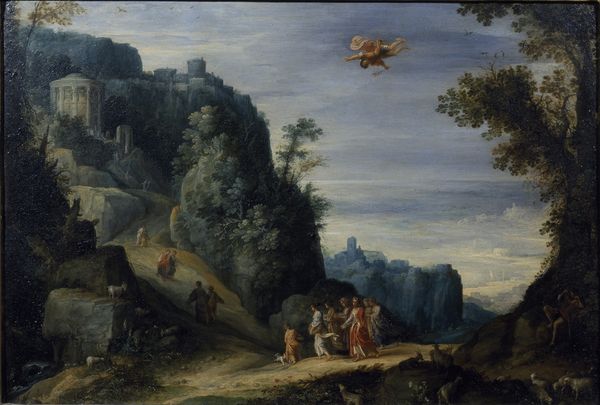
Dimensions: 135.2 x 176.2 cm
Copyright: Public domain
Editor: This is Claude-Joseph Vernet’s "Landscape with Waterfall and Figures," painted in 1768 using oil paint. I'm struck by how staged it feels, like a theatre set with a carefully constructed vista. What layers of meaning or symbolism do you see in this work? Curator: The figures invite us into this carefully orchestrated landscape, which isn’t just about nature; it speaks to cultural memory. The waterfall itself is a potent symbol - a cascade of time, perhaps? Water, of course, always speaks to cycles of cleansing, destruction, and renewal, doesn’t it? What about the placement of the castle? Editor: Perched high up like that, the castle could represent authority or permanence, but it also seems almost…isolated. A little vulnerable, perhaps. Curator: Precisely! Vernet cleverly uses this juxtaposition. He’s tapping into a deep cultural fascination with ruins and the transience of power. See how the “untamed” waterfall threatens to erode even that sense of power or order, speaking to nature's indifference to human ambitions. How do you think viewers in 1768 might have responded? Editor: I imagine they might have seen a commentary on the balance between humanity and nature, or perhaps a romanticized vision of the past. Maybe a cautionary tale about unchecked ambition. Curator: Absolutely. This painting is a fascinating blend of the real and the symbolic. It is a visual memory, crafted to evoke reflection. This landscape transports us to reflect on the echoes of history and our relationship with the environment. Editor: It’s interesting how the landscape itself becomes a kind of character in the painting, holding layers of symbolism. I'll never look at a landscape the same way again.
Comments
No comments
Be the first to comment and join the conversation on the ultimate creative platform.
